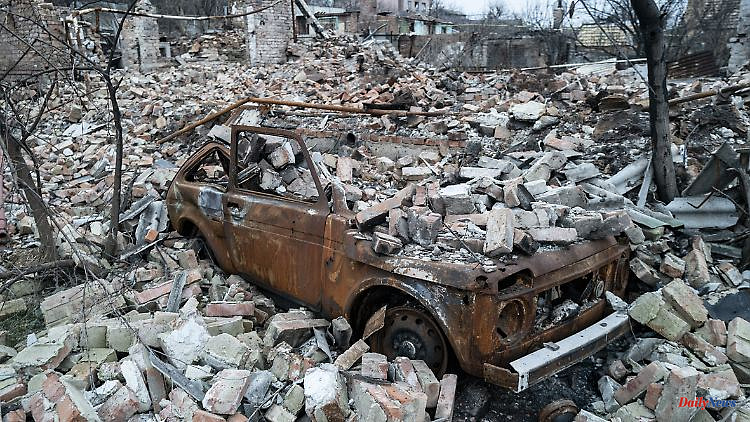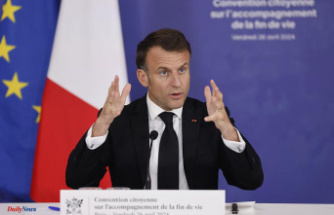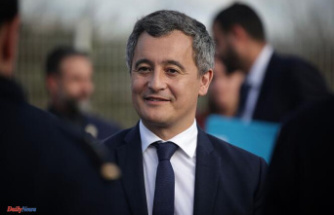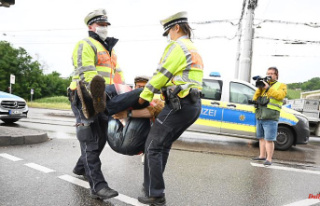Ukraine needs enormous sums to compensate for the consequences of Russian attacks. The EU Commission is launching a loan of 18 billion euros, but that alone is not enough for reconstruction. At the summit meeting, EU representatives will discuss further aid with President Selenskyj.
If Vladimir Putin's fantasy had become reality almost a year ago, President Volodymyr Zelenskyy would not have been able to hold the EU-Ukraine summit in Kyiv this Friday. Then a Russian puppet would be sitting in the government building of the Ukrainian capital. In a kind of blitzkrieg, according to Putin's idea in February 2022, his troops should conquer Kyiv and seize power.
The Ukrainians' willingness to fight prevented Putin's plans for conquest from succeeding. However, the Russian army regularly bombards Kyiv and other Ukrainian cities, causing severe damage to infrastructure. Since the beginning of the war, the European Union has therefore been supporting the reconstruction of Ukraine with billions in loans.
Commission President Ursula von der Leyen has come to the Ukrainian capital with more than a dozen commissioners and the EU's chief diplomat Joseph Borrell to discuss, among other things, financial support for the war-torn country. Shortly after her arrival, she pledged further help to Ukraine on Twitter. The EU wants to "further deepen support and cooperation," said von der Leyen.
Both the EU and Germany claim to play a leading role in reconstruction. It's about "no less than creating a new Marshall Plan for the 21st century," explained von der Leyen and Chancellor Olaf Scholz in a joint guest article for the FAZ. The project is "a generational task that must begin now".
In December, the EU agreed a loan program for Ukraine worth a record 18 billion euros. At the beginning of this year, Ukraine received the first installment of three billion euros. From March, tranches of 1.5 billion euros are to be paid out every month. According to the EU Commission, the loans are linked to 20 reform commitments and reporting obligations that are intended to ensure more rule of law and less corruption in Ukraine.
The program consists of so-called micro-financial aid, from which Ukraine was already benefiting before the war, albeit with smaller sums. The EU Commission takes out loans on the financial markets for these loans in order to then pass them on to countries on favorable terms. In addition to Ukraine, countries on the periphery of the European Union are also receiving microfinance aid that is intended to contribute to economic stability in times of crisis, including Tunisia, Jordan and Lebanon. The EU also uses the program to advance the fight against corruption in countries that are candidate countries. Hungary was the first country to receive macro-financial assistance in 1990/91.
In addition, the European Union supports the arms deliveries from the member states to Ukraine. Money from the so-called peace facility, a fund outside the normal EU budget, is used for this. The individual countries pay into this fund, with the respective contributions being staggered according to their economic performance. Germany provides the highest sum. Since the beginning of the invasion, a total of 3.5 billion euros have flowed from the peace facility for the shipment of weapons.
The EUR 18 billion loan for the reconstruction appears extensive at first glance. However, this impression is put into perspective by estimates that Ukraine needs hundreds of billions to stabilize the country again. A report prepared by the World Bank, the European Commission and the Ukrainian government put the total cost of rebuilding Ukraine and its economy at €346 billion as early as September. "The amount is expected to increase over the coming months as the war continues," the report said. In the summer, Ukrainian Prime Minister Denys Schmyhal even spoke of the need for 720 billion.
In view of Ukraine's enormous financing needs, there are repeated calls for joint EU debt to be taken up on a large scale. The German economist Achim Truger is one of the proponents. In principle, he considers a model based on the European Corona reconstruction fund to be useful in order to help Ukraine, Truger told the newspapers of the Funke media group.
"Although sums of 500 billion euros sound gigantic, in relation to the economic output of the EU it is only a good three percent," he added. In addition, mutualized debt harbors fewer risks than uncoordinated national borrowing, "also because it strengthens trust in the EU and the joint ability to act". In Berlin, however, such ideas met with little enthusiasm. Federal Finance Minister Christian Lindner has repeatedly spoken out against further mutualisation of debt.
The conflict has been smoldering in the EU for more than a decade, when the euro crisis began. It remains unsolved to this day. Perhaps the EU representatives will raise these issues at their summit with Zelenskyy. Or everyone involved prefers to drive on sight due to the dynamic war situation.












